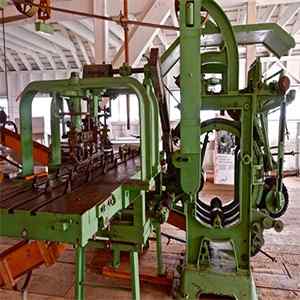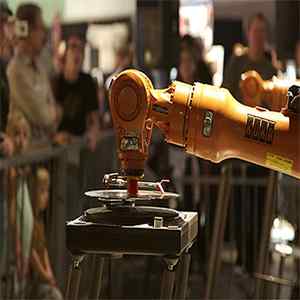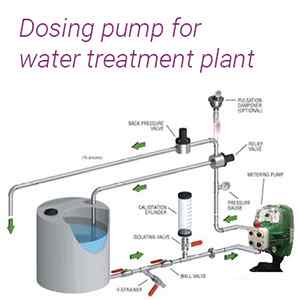Articles
Top 9 Automation Technologies Used In Manufacturing Industry
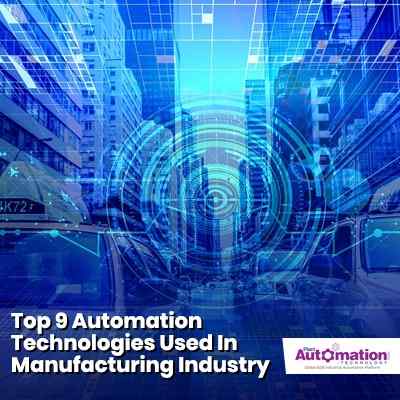
The manufacturing sector is most likely to transform in the coming years. Currently, the industry is witnessing a shift from manual assistance to automation, thus giving rise to the term "industrial automation". Most of the modern large-scale manufacturing operations are automated and require minimum or no human intervention. To meet the current requirements, industrial automation is certainly the need of the hour and this is because the conventional manufacturing mechanisms are inadequate to meet the current requirements. The two major factors driving industrial automation are the introduction of favorable policies towards the manufacturing sector and increased focus on economic diversification in emerging markets. The growth of this market can be attributed to the increasing use of enabling technologies in manufacturing, connected supply chain along with mass production to cater to the rising population, rising adoption of industrial robots in the manufacturing sector, government initiatives towards the adoption of industrial automation in various industries. Automation in the manufacturing industry uses intelligent machines in factories to carry out the manufacturing processes with minimal human intervention and tasks that require endurance, speed, and precision. Some of the top benefits of automation in manufacturing include -
- Productivity
- Accuracy
- Safety
- Quality
- Smart factories
- Repeatability
A few of the automation technologies used in the manufacturing industry are -
- Industry 4.0
- The Industrial Internet Of Things
- Robotics
- Artificial Intelligence
- Big Data
- The Cloud
- Cybersecurity
- Advanced Materials And Additive Manufacturing
- Modeling, Simulation, Visualization, And Immersion
Industry 4.0

With Industry 4.0, we have reached the next milestone in the revolutionizing industry. Connecting the emerging technologies and established trends between automation and data exchange in manufacturing is industry 4.0. It's also referred to as the fourth industrial revolution as it is focused on bringing cyber-physical systems into the mainstream and placing them at the forefront of the manufacturing industry. With technologies that are only now being conceptualized and brought into existence, Industry 5.0 has already appeared on the horizon. Our factories will become more productive and efficient and less wasteful as a result of the support of smart machines that keep getting smarter as they get access to more data. Eventually, it's the network of these machines that are digitally connected and create and share information that results in the true power of Industry 4.0.
The Industrial Internet Of Things
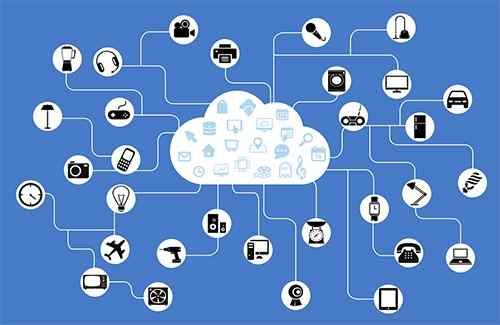
The Industrial Internet of Things (IIOT) utilizes relevant information and essential tasks are completed through tablets, smartphones, and other edge devices. In real-time, businesses can use this performance data to adapt and change their operations into a more streamlined process externally and internally for both long-term and short-term goals. Due to this super connectivity, faster response times are facilitated from all departments and brings with it improved agility for operations of every size. Smart machines are not only better than humans at capturing and analyzing data in real-time, but they are also better at communicating important information that can be used to drive business decisions faster and more accurately. IIoT in manufacturing holds great potential for quality control, supply chain traceability, sustainable and green practices, and overall supply chain efficiency. Predictive maintenance, asset tracking, improved field service, enhanced customer satisfaction, and facility management are the top touted benefits of IIoT.
Robotics

The robots will command a greater presence in shaping the manufacturing industry as these entities become cheaper, smarter, and more efficient in their roles on the factory edge. With advances in robotics technology, these machines are allowed to take on more complex traits, including heightened dexterity, machine learning, memory, and the ability to collaborate more effectively. Hence, these robots will usher in a new set of standards that every manufacturer will need to adapt to remain relevant. Robots have been relied upon as an essential part of manufacturing. Robotic presence provides incredible benefits, including enhanced accuracy, speed, and tireless labor. However, they cannot do it all. As a result, these smaller and agiler implements on the manufacturing edge are engineered to work collaboratively alongside their human counterparts and are referred to as collaborative robotics.
| Also Read: Navigating the Maze: Choosing the Right Automation Solutions for Your Manufacturing Plant |
Artificial Intelligence

The artificial intelligence technology is already in our daily lives in the form of self-driving cars and industrial robotics. The technology in manufacturing applications will become the new standard by which large sets of data are analyzed and predictive maintenance is undergone. In short, to survive, the companies will have no choice but to "go digital". The AI algorithms can also be used to optimize manufacturing supply chains, thus helping companies anticipate market changes. By looking for patterns linking location, weather patterns, consumer behavior, political status, socioeconomic and macroeconomic factors, the AI algorithms formulate estimations of market demands. The manufacturing industry will have the biggest impact of AI coupled with automation.
Big Data

As far as the variety and depth of the product are concerned, the manufacturing industry is the most complex one. The global development challenges such as opening new factories in new locations, transferring production to other countries can be tackled by companies using big data in manufacturing. How we store and capture data is changing by the day. As a result, new standards in sharing, transfer, updating, search, visualization, querying, and information privacy are emerging. More robust technologies need to be adopted by the manufacturers to keep up with the data, which is where specialized Enterprise Resource Planning (ERP) solutions give your business the critical edge it needs to thrive. The best example of how automation technologies are increasing productivity and how we manage data in the manufacturing environment is the robotic process automation (RPA).
The Cloud
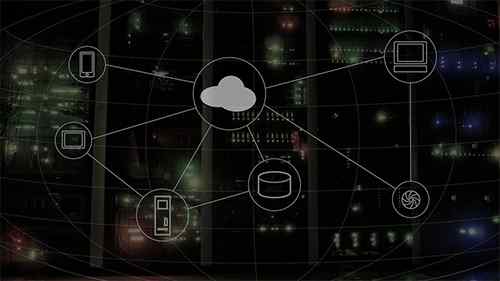
The cloud technology is new and traditional operators across industries are skeptical of its intangible nature. As it is not maintained locally and cannot be stored, monitored, or secured using traditional methods, the cloud-based technology is how the companies of the future will operate as it allows remote workforces and in-house to collaborate in real-time more effectively compared with traditional data systems. One advantage of cloud technology is that the cloud approach is faster, reduces maintenance, and improves manageability. One of the recent examples of innovation in industry 4.0 that has reinvigorated the manufacturing space for enterprises of every size is the Cloud ERP. The cloud ERP solutions without the high cost of on-premises solutions provide significantly improved levels of insight into operations by omitting the costly expenses of maintenance, hardware, and security. And with the extra capital provided by these all-in-one solutions, the small and medium businesses are finding it easier to make their mark in the marketplace, in many cases built specifically for their industry.
Cybersecurity

Maintaining the integrity and security of the systems becomes a much larger issue, as more and more operations move toward cloud-based solutions and rely more heavily on a robotic workforce. More opportunities for threats emerge as more manufacturers simultaneously build and integrate their systems through the Industrial Internet of Things. Moreover, new technological advancements are being implemented by manufacturers to enhance automation processes every day. The experts are increasingly aware of their need for heightened security in an increasingly insecure digital landscape, as modernization presents multiple opportunities for growth and process enhancement. To address the vulnerabilities, a closer look is being laid at cloud-based ERP and unified systems by manufacturing and other industries. As time goes on, cloud-based ERP systems are being relied upon by enterprises of every size. Perhaps, cloud-based security is one of the major topics surrounding the efficacy of modern ERP systems. It's not that security risks don't exist in the cloud. They are always present. But, apart from the cost, handling security issues for cloud-based ERP is a challenging and complex process.
Advanced Materials And Additive Manufacturing
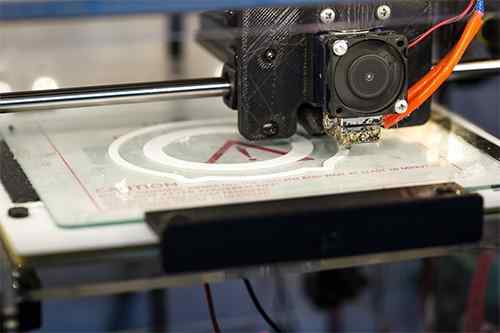
The advanced materials and additive manufacturing are known by the more common name of 3D printing, which is emerging advanced manufacturing technology. 3D printing can now build large and complex structures like housing in less than a day, unlike the old processes that used to take weeks to accomplish on a small scale. Using new special consumables materials is the main development direction of additive manufacturing, such as 3D printing. The technique is relatively easy to metals and tough to high strength alloys. It's relatively more difficult to some ceramics and may be harder to the nanoceramics. Some new nano modifier 3 printing materials are prepared to solve the problems of 3D printing materials, such as limited properties and applications. To characterize the obtained NiCrAlY, WC-10Co-4Cr and ceramic powders and coatings, scanning electron microscopy (SEM), microhardness and friction and wear tests are used. The results obtained show that the optimized process can be used to prepare the nano modifier materials successfully. The coatings possess high bonding strength and good wear resistance. High strength alloy materials and even nano-ceramic materials are prepared with nano-modification and nanostructured spherical particles powder through 3D printing.
| Also Read: Intelligent Automation Technologies: Bridging Humans and Machines |
Modeling, Simulation, Visualization, And Immersion
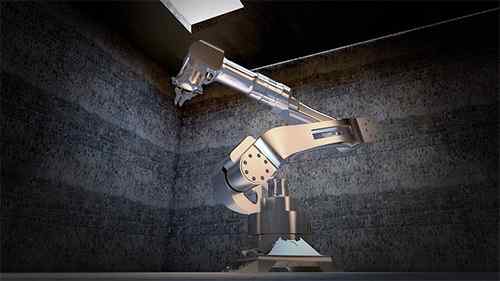
When it comes to making decisions on the future of any business, manipulating, analyzing, and leveraging data is important. Businesses can leverage the latest technology to more effectively report, review, and forecast their data with new forms of simulation, visualization, and the interaction available. A few of the innovations like virtual reality, immersion tools, and 3D visualization are available to a host of businesses that depend on massive amounts of data daily including sciences, manufacturing, healthcare, energy, and finance. These innovations and associated tools, beyond data, help develop lead teams and tech to greater success rates with more effective and thorough preparation for mission-critical tasks. The integration of simulation, modeling, visualization tools and facilities with other product life cycle software and management tools made its advances in the virtual product development systems




